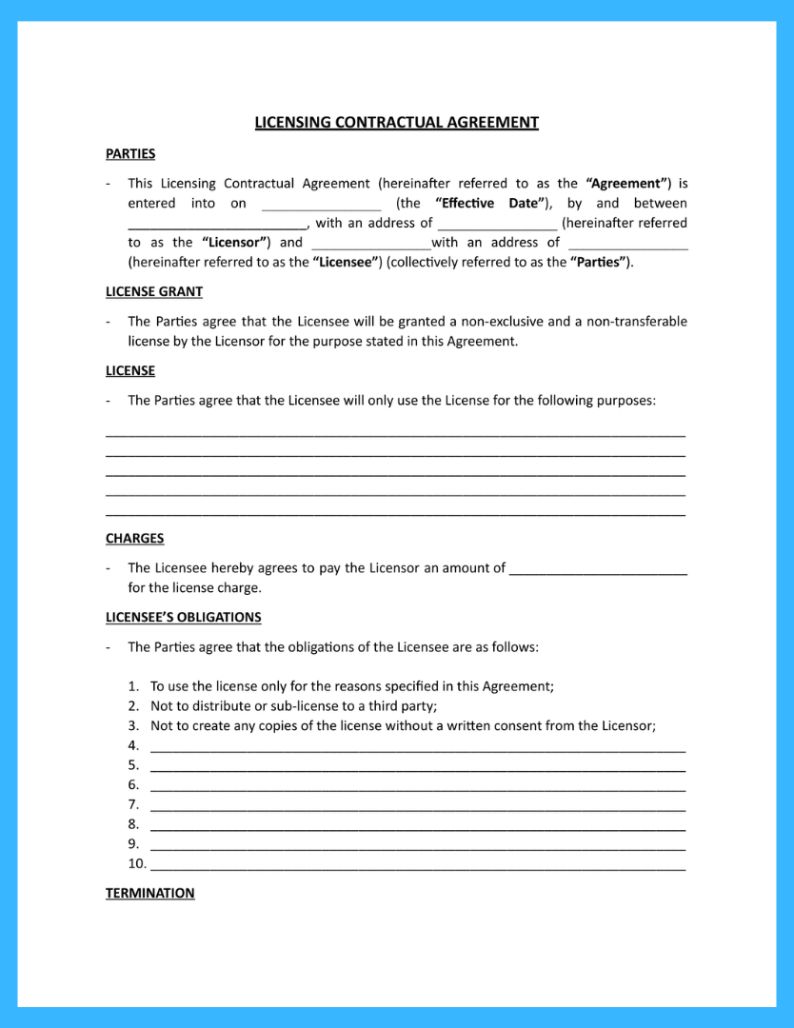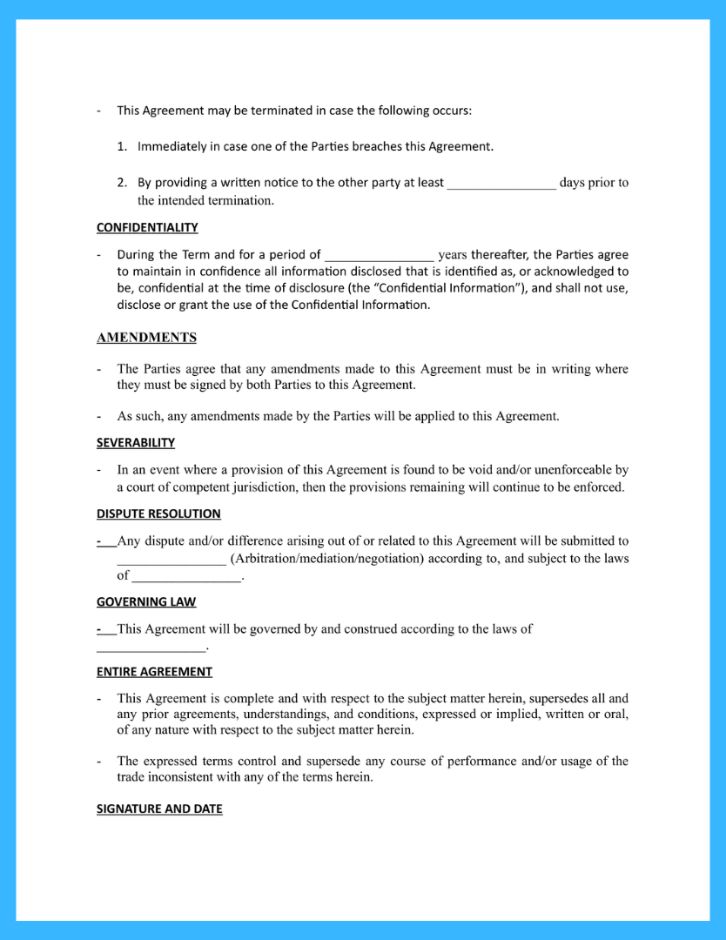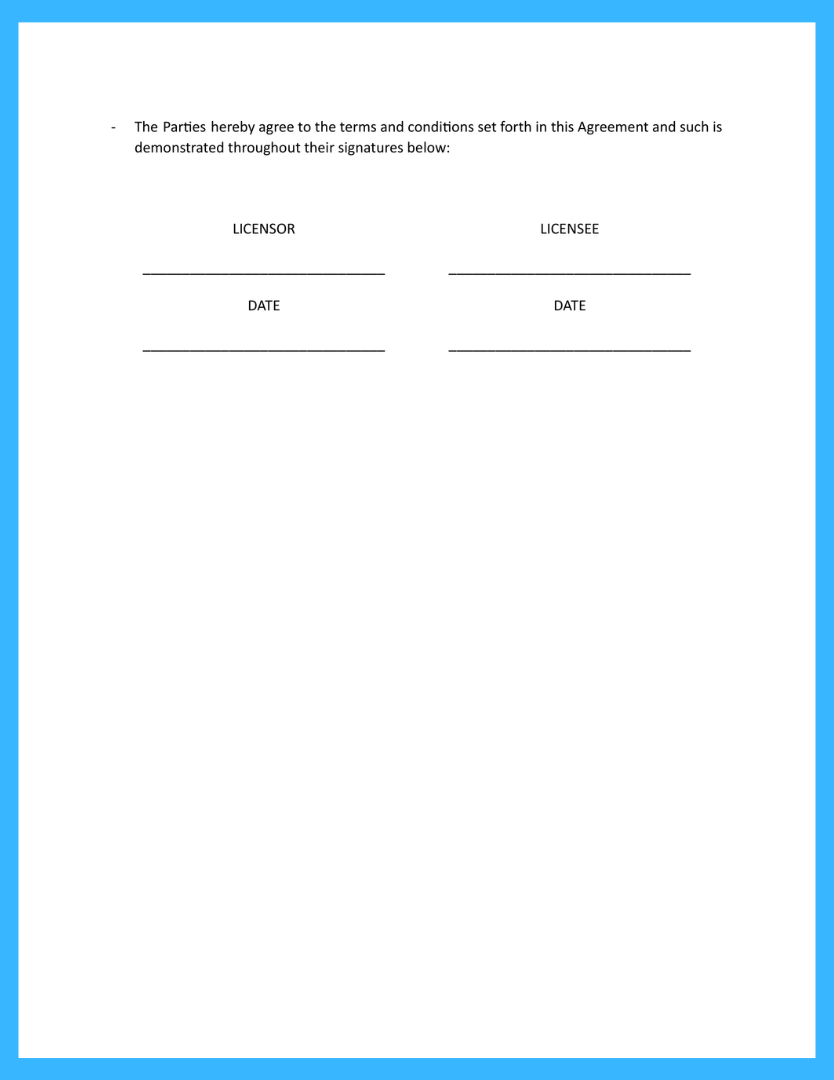
Are you entering the complex realm of intellectual property and licensing? While it can seem like an uphill battle, there are resources you can take advantage of to come out on top.
Arm yourself with Signaturely’s easily accessible and user-friendly licensing agreement templates. Simplify the process, protect your interests, and grant licenses professionally. This article provides an overview of the ins and outs of licensing agreements .



Licensing agreements, also referred to as license agreements, are legal contracts between two parties – the licensor and the licensee. The licensor, often the property owner, grants the licensee permission to use particular intellectual property.
These permissions can include patents, trademarks, copyrights, or trade secrets, for a specified period under certain conditions. The agreement establishes the terms of use, payment details , and how the licensee can exploit the licensed property. Thus, it serves as a protective mechanism, ensuring a fair transaction that respects the rights of both parties involved.
Licensing agreements play a vital role in facilitating business transactions involving intellectual property. Providing a legal framework significantly reduces direct or indirect conflict risks between the licensor and licensee.
These agreements help the licensor maintain control over their property, ensuring it’s not misused or devalued. On the other hand, the licensee receives prior written consent to use the licensed property, thereby preventing potential infringement issues.
Moreover, licensing agreements are crucial in outlining specific terms such as royalty payment, duration of use, and termination conditions. By clearly defining these, licensing agreements prevent misunderstandings, protect interests, and ultimately provide a significant competitive advantage in the business world.
DISCLAIMER: We are not lawyers or a law firm and we do not provide legal, business or tax advice. We recommend you consult a lawyer or other appropriate professional before using any templates or agreements from this website.
As the world pivots to digital, intellectual property takes center stage, and with it, proper licensing agreements are necessary. So, when exactly should one use licensing agreement templates?
For starters, if you’re a business owner or innovator with a valuable intellectual asset, licensing agreements are an absolute must when you permit another entity to use your assets. An agreement could be used when a company wants to manufacture a product using your patented technology or a songwriter wishes to give a music artist the right to perform their song.
Moreover, these license agreement templates are helpful when collaborating with another party. If you plan to use someone else’s copyrighted material or proprietary technology, licensing agreements can help delineate usage rules, protecting both parties from potential infringement or misuse.
Another instance could be a software developer granting licenses to users. The license agreement would outline the users’ rights, such as installation limits or restrictions on modification.
When granting or obtaining intellectual property rights, turn to licensing agreement templates. With Signaturely, these templates are just a few clicks away, simplifying the process and ensuring your intellectual assets are well protected.
While a licensing agreement can appear intricate and complex, it ultimately comes down to a few key elements that make it work. Crafting a comprehensive and effective agreement ensures that it truly becomes an instrument of protection for your intellectual property. Below are the crucial components you need to include when drafting a license agreement.
First and foremost, every license agreement should clearly define who the parties involved are – the licensor and the licensee. These details include both parties’ full legal names, physical addresses, and possibly contact information. Being precise leaves no room for ambiguity and provides a clear reference point for future communication or possible legal requirements .
In some cases, you may also want to mention the legal status of both parties, especially if they are business entities. For instance, if the licensor is a corporation, you should state the corporate name precisely as it appears in the official registration documents and the jurisdiction where the company is registered.
The purpose of licensing serves as the cornerstone of the entire license agreement. This section should include explicit details about why the license is being granted and what the licensee can do with the licensed property. Is it for a one-time use? Or is it to manufacture and sell products using patented technology?
The more precise you are in defining the purpose, the less room there is for misinterpretation. Furthermore, outlining these specifics can also prevent the licensee from engaging in activities outside the agreed scope, thereby providing additional protection for the licensor. Remember, broad and ambiguous terms can lead to complications down the line, so specificity is your best friend here.
This section is the heart of the matter – the intellectual property itself. It’s crucial to provide a detailed description of the licensed intellectual property. Whether it’s a trademark, patent, copyright, or trade secret, clarity here can prevent potential misuse or overstepping of boundaries by the licensee.
Make sure to describe your intellectual property in a way that leaves no room for doubt. If it’s a patent, provide the patent number and a comprehensive description of the technology. For copyrighted material, offer enough detail to identify the work. If it’s a trademark, mention the trademark registration number and the exact representation of the mark.
Moreover, if you’re licensing a bundle of intellectual property rights, it’s essential to list each individually and describe the associated rights. For instance, a software license may involve both copyright and trademark rights.
The payment structure is one of the most critical aspects of any license agreement. How will the licensor be compensated for granting the license? The agreement must state whether a flat fee, royalty payments, or another form of compensation will be used.
With royalty payments, specify the percentage and the calculation basis. Will it be a percentage of gross revenue, net profit, per unit sold, or another cause? Furthermore, how often will payments be made? Also, stipulate the preferred payment method and the consequences for late payments. Remember, the more precise the payment details, the smoother the business relationship.
Another vital element is the term of the license, as this section outlines the agreement’s effective date and the duration of the license. These terms could be for a set period (e.g., five years), for the life of the intellectual property (such as the life of a patent), or until a specific event occurs.
Furthermore, consider whether the license will be renewable. If so, detail the renewal process, any conditions, and whether there are any limits on the number of times the license can be renewed.
Next, you need to anticipate and plan for potential hiccups. Disputes are never desired, but being prepared can save you headaches later on. Specify the dispute resolution process – will you use arbitration, mediation, or court proceedings? What applicable law will govern the agreement?
In addition, your license agreement should outline the terms for termination. Under what circumstances can the license be terminated? What happens to the licensed intellectual property after termination?
Finally, and most importantly, the license agreement needs to be signed by all parties to become legally binding . Without a signature, it’s merely a piece of paper.
This is where Signaturely can become your essential partner. With Signaturely, you can easily send, sign, and manage your licensing agreements online. It provides a secure, efficient, and legally binding way to get your contracts signed , eliminating the hassle of physical paperwork.
We’ve got your back here at Signaturely, and we’re ready to help make stress-free agreements a reality. Forget the confusing paperwork and overwhelming legal jargon – get easy, breezy agreements templates for your customers in minutes with our free template.